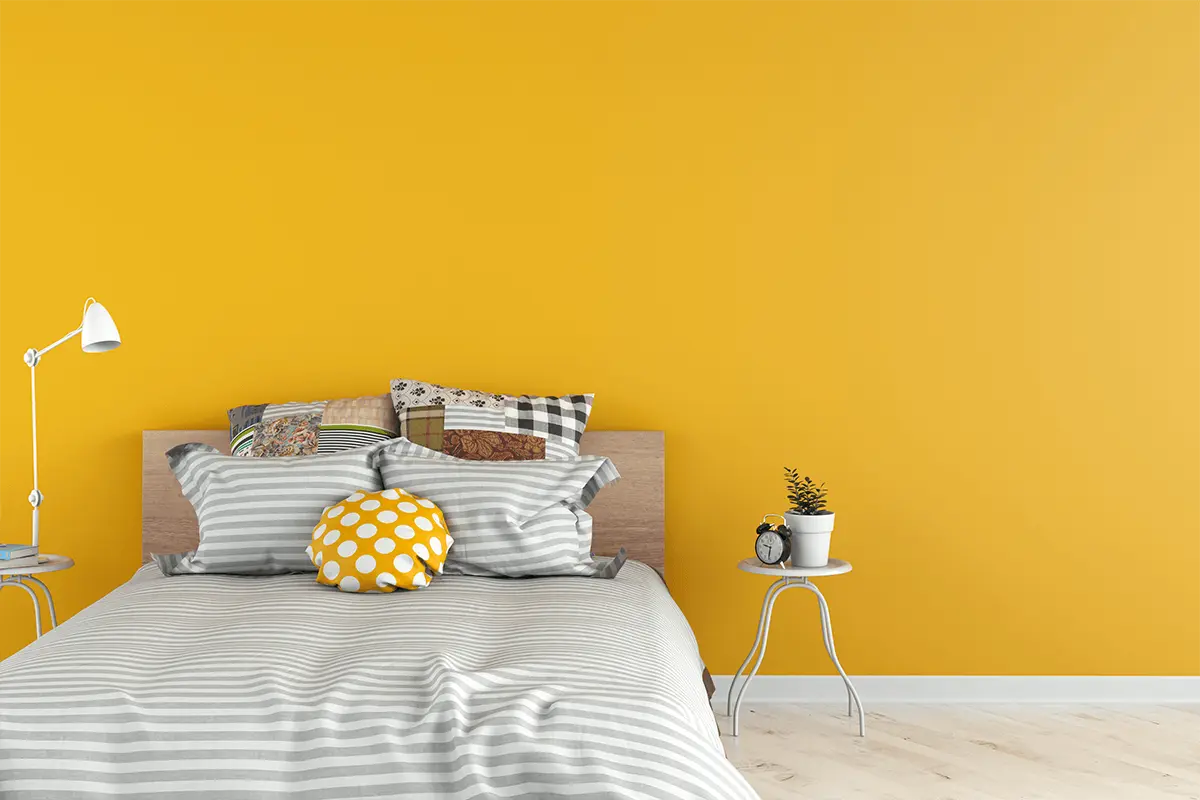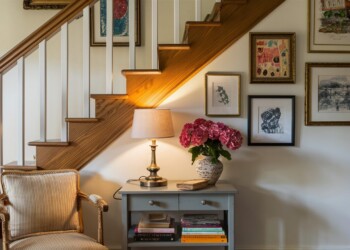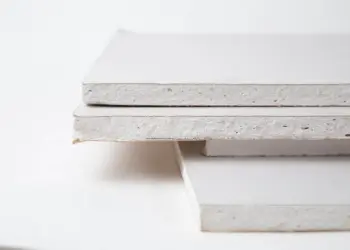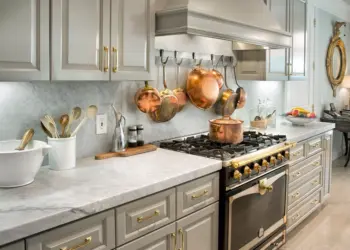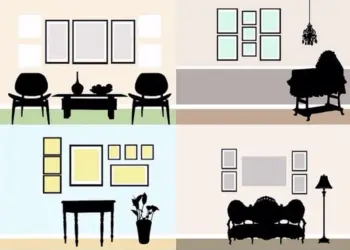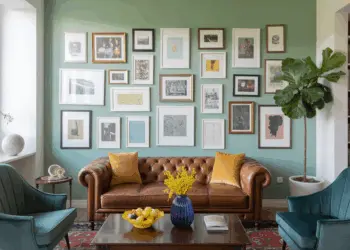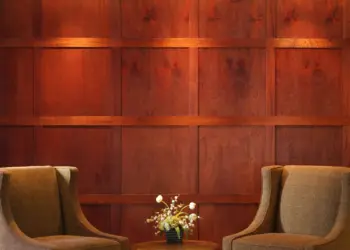Are you tired of staring at the same old four walls? Is your room crying out for a makeover? Well, fear not, because we’ve got the ultimate guide for you – a room with one wall different color: Guide to accent painting.
Why Accent Walls Matter
Before we dive into the nitty-gritty of accent walls, let’s talk about why they matter. A room with one wall different color can break the monotony, add drama, and create a focal point that steals the show! Now, who wouldn’t want that?
Dos of Adding an Accent Wall
Let’s start with the dos, the things you definitely want to do when adding an accent wall. These dos will turn your room from drab to fab in no time!
- Choose the Right Wall: Not every wall is born equal. Pick a wall that naturally draws attention, like the one with a fireplace or the one your bed leans against. Trust us; you’ll thank us later!
- Select the Perfect Color: This is the heart of the matter! When choosing a color, consider the room’s existing color scheme. Go bold or go home, but make sure it complements the rest of the space. A room with one wall different color is all about harmony, not chaos!
- Create Contrast: The whole point of an accent wall is to stand out. Ensure your chosen color contrasts with the other walls. If your room is light and airy, go for a darker shade; if it’s already dark, opt for a lighter color.
- Experiment with Patterns: Don’t be afraid to mix things up! Stripes, chevrons, or even a mural – let your creative juices flow. A room with one wall different color can handle a bit of pattern play.
- Incorporate Texture: Add some flair with textured paint or wallpaper. It’s like giving your wall a personality makeover! Your room will thank you for the touch of uniqueness.
Don’ts of Adding an Accent Wall
Now, let’s talk about the don’ts – the pitfalls you want to avoid at all costs. We’re here to guide you away from accent wall disasters!
- Avoid Random Selection: Choosing a wall like you’re playing spin the bottle is a big no-no. Be strategic. Your accent wall should enhance the room’s architecture, not leave people scratching their heads.
- Steer Clear of Clashing Colors: While bold is beautiful, clashing is catastrophic. Ensure your chosen color plays well with others in the room. A room with one wall different color doesn’t mean a room with one wall causing chaos!
- Don’t Overdo It: One accent wall is plenty. Resist the urge to turn your room into a psychedelic maze. Remember, subtlety is the name of the game.
- Say No to Accenting Everything: The idea is to highlight, not overwhelm. Don’t turn your room into a carnival by accenting every nook and cranny. Choose one wall and stick to it!
- Avoid Ignoring Lighting: Lighting can make or break your accent wall. Ensure it gets the attention it deserves by using proper lighting fixtures. A well-lit accent wall is a showstopper!
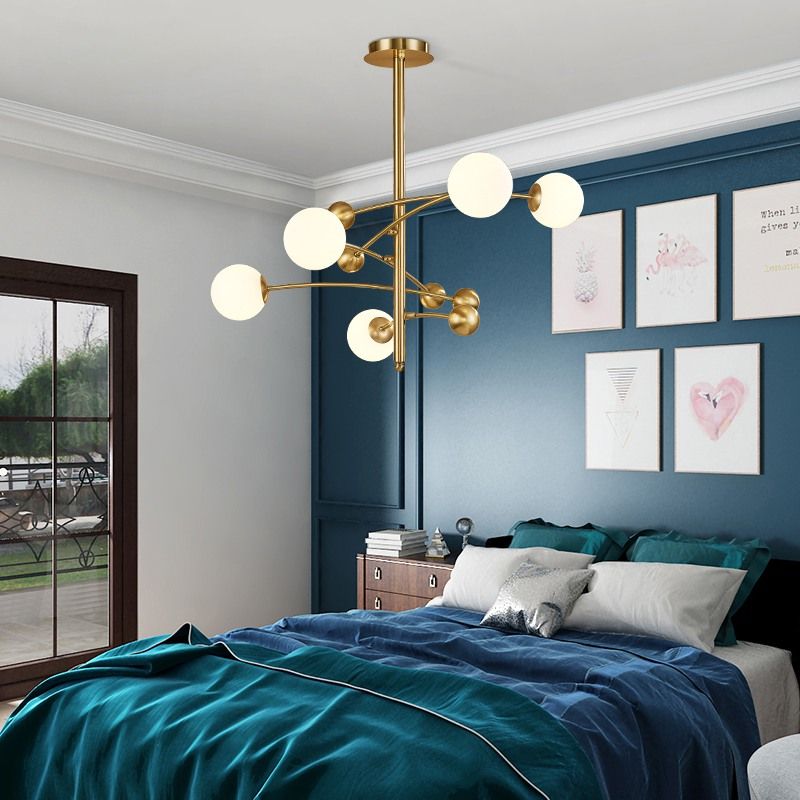
Understanding the Essence of an Accent Wall
An accent wall isn’t just a canvas for a different hue; it’s an opportunity to infuse personality and depth into a room. Whether it’s an interior wall in your living room or an exterior facade, the accent wall beckons for attention with its distinct color, shade, design, or material. By strategically choosing this canvas, you can alter the room’s size, shape, and ambiance.
How to Decide Which Wall Deserves the Spotlight
To identify the perfect canvas for your accent wall, step back and observe the room holistically. Allow your gaze to be drawn to natural focal points, built-in features, and architectural details. Opt for a wall that naturally commands attention or complements existing features, such as a textured fireplace or a captivating brick wall. Avoid asymmetrical walls impacted by slanted ceilings, as they may unintentionally emphasize the ceiling’s irregularities.
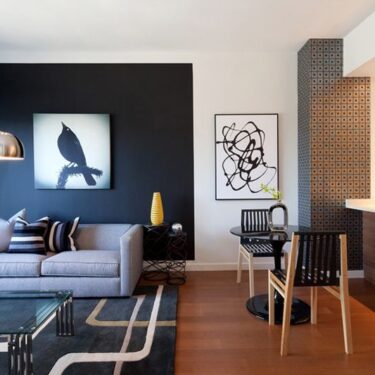
How to Choose an Accent Wall
Picking the right wall is an art, not a science. Here’s a foolproof guide on choosing an accent wall that will leave your friends wondering if you hired an interior designer!
- Identify Focal Points: Look for natural focal points in the room. It could be a fireplace, a large window, or even an architectural feature. Your accent wall should complement, not compete.
- Consider Room Layout: Think about the room’s layout and where your eyes naturally wander. The wall your bed leans against or the one behind your sofa is often a safe bet.
- Follow Your Instincts: Sometimes, you just know. Trust your gut. If a particular wall is calling out to you, it’s probably the one. A room with one wall different color is all about personal expression!
- Evaluate Lighting: Assess the natural and artificial lighting in the room. A well-lit accent wall can transform the entire ambiance.
- Connect with Existing Colors: Ensure your chosen color connects with the room’s existing colors. It’s like introducing a new character to an ensemble cast – they should complement, not clash!
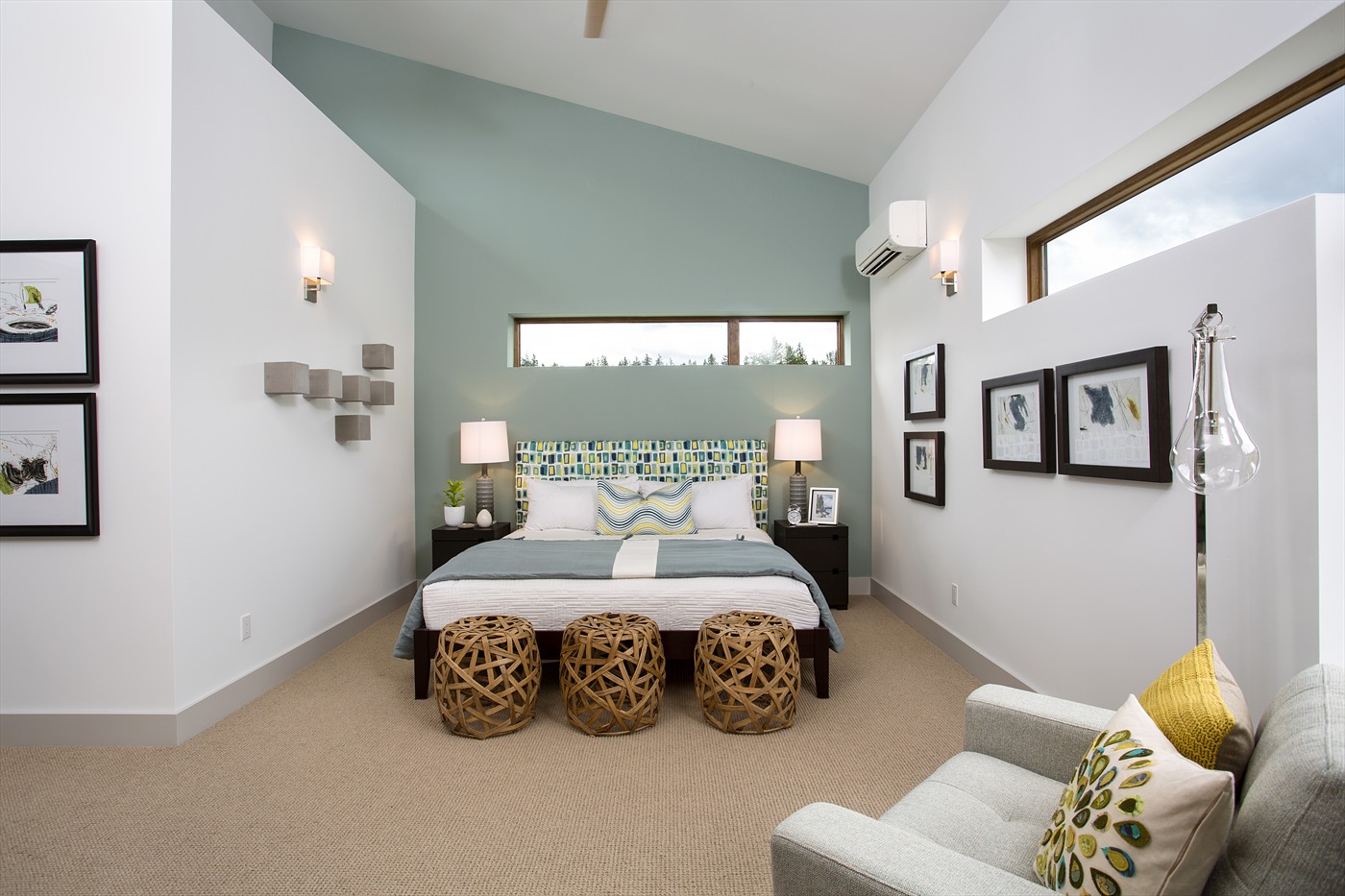
Tips for Styling Accent Walls
Think Beyond Solid Colors
While solid colors exude elegance, patterns elevate your accent wall into a visual masterpiece. Consider stripes, ombré effects, or specialty paint finishes to add depth and dimension. Metallic wall finishes make bold statements, while wallpapers and peel-and-stick murals offer intricate designs. Embrace the power of varied textures, such as stone, wood, or brick veneer, to elevate your accent wall to new heights.
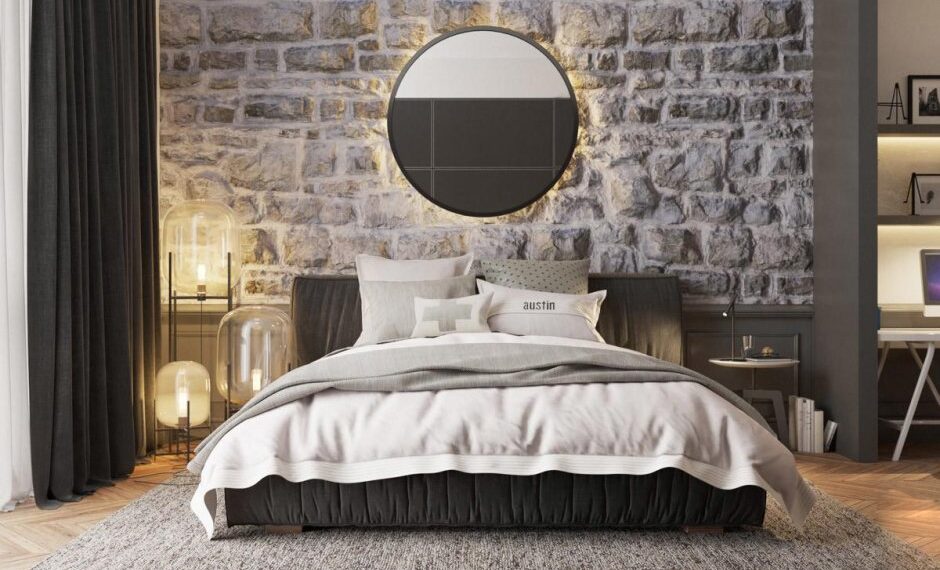
Don’t Forget About Texture
Texture is a silent artist that can redefine your accent wall. Beyond changing colors, introduce stone, tile, or wood textures to evoke a tactile sensation. Densely packed photo galleries, fabric-draped walls, or wall-mounted electric fireplaces contribute both texture and color, enriching the visual tapestry of your space.
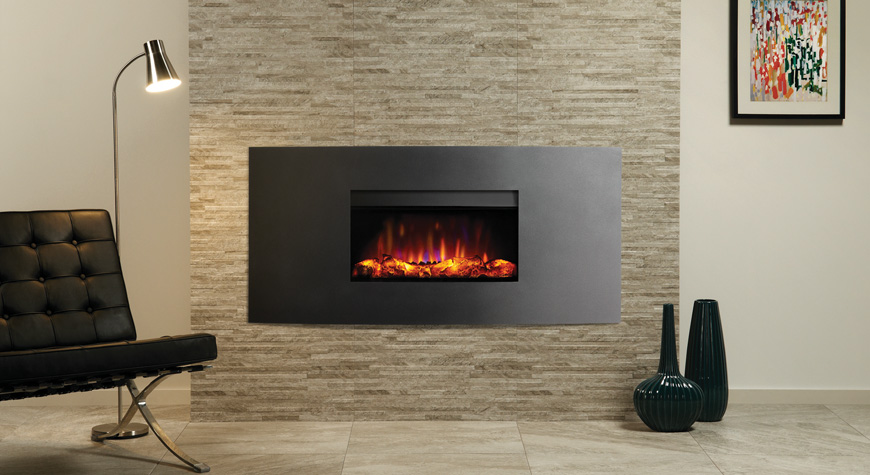
Add Accent Walls in Neutral Rooms
Neutral rooms need not shy away from accent walls. A cinnamon brown accent wall can be as dramatic in a neutral color scheme as a bold red or blue. Break the stereotype of accent walls only in vibrant hues and let subtlety create its own statement.

Don’t Shy Away from Bold Colors
Bold colors inject life into a room when used purposefully. A matte-finished dark or black accent wall, when balanced with similar shades in the room, becomes a captivating backdrop. Coordinate throw pillows, decor, and accessories to ensure a seamless integration of the bold color into the overall aesthetic.
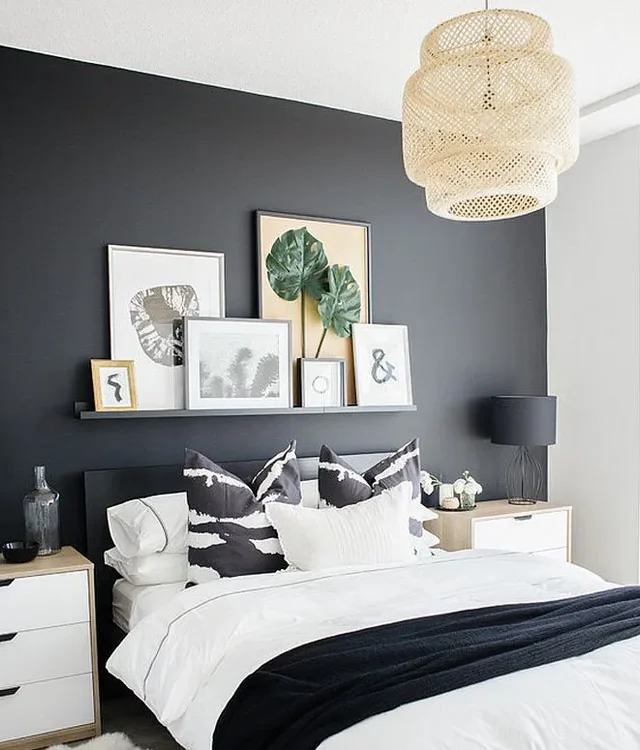
Consider the Other Wall Colors
Maintain a harmonious balance by considering the color palette of adjacent walls. Accent walls often shine when juxtaposed against light to medium shades, creating a visually striking contrast. Even in all-white rooms, a carefully chosen accent color can bring modernity without overpowering the space.

Don’t Just Think About Walls
Challenge the conventional and let your creativity extend to the ceiling. Transforming the ceiling into an accent wall with soft or vivid colors, complemented by white crown molding, adds a touch of sophistication to your space. Explore unconventional spaces, such as nooks or cut-out areas, as potential accent wall locations.

Consider Wallpaper
Traditional or temporary, wallpapers are a captivating choice for accent walls. Modern temporary wallpapers offer designer aesthetics without the commitment, making them ideal for personalizing your space. Choose patterns and colors that resonate with your style for a chic and personalized touch.

Rules for Designing an Accent Wall
While the journey of creating an accent wall is undoubtedly a creative one, adhering to a few key design rules ensures a cohesive and visually pleasing result.
Integrate the Accent Wall with Decor
The color of your accent wall should harmonize with the room’s decor, creating a seamless integration. Avoid an overwhelming monochromatic look by balancing the accent color with complementary hues in the room.
Support Existing Focal Points
Accent walls should complement existing focal points rather than create a clash for attention. Preserve the harmony of the room by strategically choosing a wall that enhances, not competes with, the room’s key features.
Choose Colors Based on Space, Not Trends
Select accent wall colors based on your space’s unique characteristics rather than following fleeting trends. While trendy colors in home decor like sage green may be tempting, ensure they align with your room’s existing color palette for a timeless appeal.
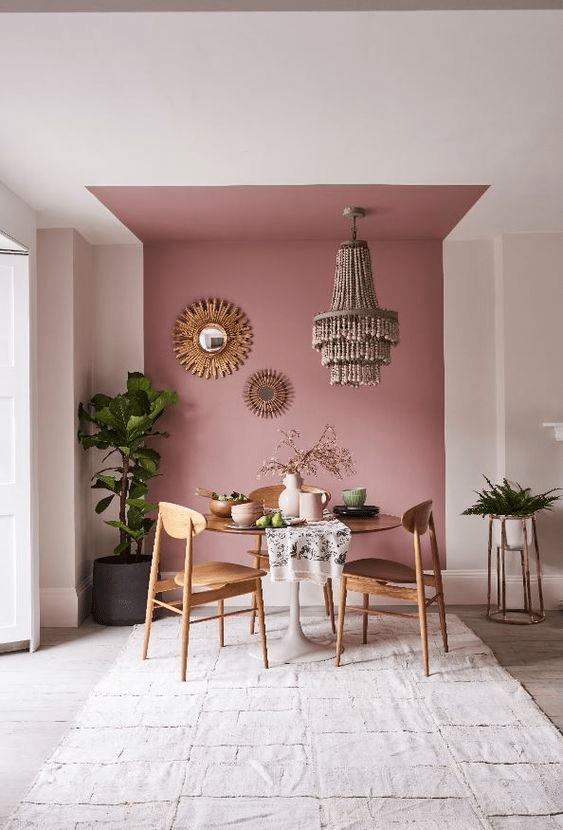
There you have it – your ultimate guide to a room with one wall different color: Guide to accent painting. Armed with these dos, don’ts, and expert tips on choosing the perfect accent wall, you’re ready to transform your space. So, grab that paintbrush, pick your wall, and let the accent magic begin! Your room will thank you for it!
FAQs
Is it OK to paint one wall a different color?
Yes, painting one wall a different color, often referred to as an accent wall, is a popular and creative design choice. It can add visual interest, depth, and personality to a room.
What is the rule for painting walls different colors?
There are no strict rules for painting walls different colors, but some guidelines can help achieve a balanced and visually appealing look:
- Choose a wall that naturally draws attention, like one with architectural features.
- Consider the room’s focal point and paint the accent wall near it.
- Harmonize colors with the overall color scheme of the room.
What does painting one wall darker do?
Painting one wall darker can create various effects:
- Depth: It adds depth to the room, making it feel more dynamic.
- Accentuation: The darker wall can serve as a focal point, highlighting certain elements.
- Coziness: Darker colors can create a cozy and intimate atmosphere.
How do you paint walls different colors in the same room?
To paint walls different colors in the same room:
- Choose Colors: Select colors that complement each other and the overall design.
- Define Boundaries: Decide where each color will end and the next begin.
- Use Tape: Use painter’s tape to create clean lines between colors.
- Prime Walls: If transitioning between light and dark colors, consider using a primer to ensure even coverage.
Can you paint 2 walls different colors?
Yes, painting two walls different colors is a common design approach. It adds visual interest and can be used to highlight specific areas or architectural features.
Should you paint opposite walls the same color?
Painting opposite walls the same color can create balance and cohesion in a room. It can be particularly effective if there are no distinctive features on either wall that need accentuation.
